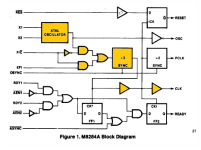Right now I’ve got 2 banks of M5M4256P at 15ns and 2 banks of HM4864P-2 (15ns).What is the speed rating of your DRAM? 80 nsec would be optimal, though you could probably get away with selected 120 nsec ones.
Laying around I have two 8ns 256 banks, but nothing faster than 15ns for 64.
I have reseated every chip on the right hand side of the motherboard and now it’s a lot stabler. It can usually do 6-7 rounds of Ruud’s diagnostic ROM without too many trouble. Sometimes I get an address error on bank 3 (513KB - 576KB) but it happens pretty rarely.
If you think it’s ideal to use 8ns, I can swap Bank 0 and Bank 1 with the 8ns ones.
Still getting the IRQ0 issue. Keyboard works after first pass (I think that’s something with my Model M) but I have just noticed that the ROM tests on the top right fail most of the times and some only pass occasionally after multiple rounds. I am using Ruud’s Diagrom in a 27256, if it helps.
EDIT: Put the 8ns 256s in, since I got another address error on a low address (77KB), let’s see if it helps.
EDIT2: Worked fine for an hour or so then the 77KB/125KB error came back, this time even with a new set of RAM chips. I have only reflowed bits 4-7 of Bank 0, should I try reflowing 0-3 as well?
Last edited:

